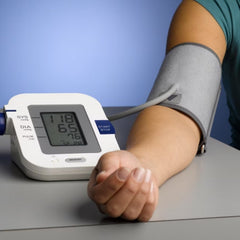How Many Steps Should You Take Each Day to Protect Your Knee Joints? How to Walk for Better Health?
Table of Contents:
Walking, as a simple, easy-to-do, and highly cost-effective form of exercise, has become the preferred choice for many people. More and more studies show that increasing the number of steps you walk each day in moderation not only promotes health but also extends lifespan! However, many people are concerned: can walking more really avoid damaging the knees? How many steps should one take to effectively exercise the body while preventing knee joint damage?

Walking 8,000 Steps a Day Helps Protect the Knee Joints
A study explored the connection between "daily steps and knee osteoarthritis" and found the ideal amount of walking for preventing knee joint diseases.
The research shows that walking about 8,000 steps per day is optimal for preventing knee joint diseases. This amount and intensity of walking can not only enhance muscle strength and improve joint stability but also effectively reduce the burden on the joints. However, when the number of steps exceeds 8,000, the benefits for the joints no longer increase.
Walking is not about doing more; it should be tailored to the individual. Moderate exercise is always best. For people who rarely exercise, walking too much can easily lead to knee injuries or pain. Overweight individuals may experience increased wear on their joints, which could lead to knee pain if they walk excessively.
The Many Benefits of Walking 8,000 Steps a Day
Aside from protecting the knee joints, studies show that walking 8,000 steps a day has several other benefits.
Reduced Risk of Death
A study demonstrated that the ideal number of steps for reducing the risk of death varies by age:
- For people aged 18 to 60, the ideal number of steps is 8,000 to 10,000.
- For people over 60, the ideal number of steps is 6,000 to 8,000.
Lowered Risk of High Blood Pressure
Research has found that after consistently walking briskly for three months, most people saw a decrease in blood pressure by about 2-3 mmHg. For people with high blood pressure, walking 4,000 to 8,000 steps daily can achieve the best effect in lowering blood pressure.
Reduced Risk of Six Chronic Diseases
Walking more than 8,000 steps a day can reduce the risk of six chronic diseases, including:
- Obstructive sleep apnea
- Obesity
- Type 2 diabetes
- Hypertension
- Gastroesophageal reflux disease (GERD)
- Severe depression
What Time of Day is Best for Walking to Maximize Health Benefits?
Walking exercises can be done at any time and place. However, if you want to set a fixed time for exercise, it is recommended to walk after 6 p.m. A study published in *Obesity* in 2024 found that the best time for exercise is after 6 p.m. This time is particularly beneficial for lowering blood sugar. Additionally, exercising after 6 p.m. provides the greatest health benefits by reducing the risks of cardiovascular disease, microvascular disease, and overall mortality.
It is advised to warm up before walking and to swing your arms while walking to enhance the workout. Also, choosing the right footwear is essential to avoid injuries.
What Walking Methods Are Not Suitable for the Elderly?
It is important to note that not all "healthy" walking methods are suitable for everyone, especially for older adults. They need to choose the appropriate walking style based on their individual conditions.
Walking on Cobblestone Roads is Not Suitable for Diabetics, Heel Pain, and Flat Foot Patients
Some middle-aged and elderly people enjoy walking on cobblestone roads, believing that it benefits their health. Although some studies suggest that walking on cobblestones can help improve the regulation of the nervous and endocrine systems, it is not suitable for everyone.
Older adults with diabetes may have reduced sensitivity to cold, heat, and pressure. When walking on cobblestones, if they accidentally injure their feet, it can lead to skin damage and increase the risk of infection.
People with heel pain should also avoid walking on cobblestones. Most foot pain is caused by plantar fasciitis, which is often triggered by activities that put extra stress on the feet. Continuing to walk on cobblestones in this case could worsen the condition.
Moreover, people with flat feet are at higher risk of foot injuries when walking on cobblestones.
Walking Backwards May Do More Harm Than Good
Many elderly people believe that "one step backwards is worth ten steps forwards." While walking or running backwards can indeed stimulate muscles that are not often used and improve blood circulation and balance, it is not suitable for everyone.
Walking backwards can lead to falls, which are especially dangerous for older adults. Serious falls can result in fractures or even more severe injuries.
For individuals with knee joint inflammation, walking backwards may exacerbate the discomfort. When walking backwards, to maintain balance, the knee joint often straightens involuntarily, which places extra stress on it. Therefore, older adults with knee pain or inflammation should avoid walking backwards.





